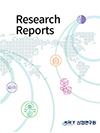Research Reports

tightened, so it is necessary to provide against this.
1. Culture Contents
The culture industry in China is controlled by Chinese government in the contents and the market entry based on license system and supervision system. It means the industry has a very high entrance level for foreign investor. For this reason, local policy for culture contents industry generally do not deviate significantly from the policies of central government. Instead, local policies are more focused on the development of cultural contents with local characteristics. For example, Shanghai has been supporting the stable development of the cultural contents industry as stipulating relevant legislation. Besides, it is also taking the lead in opening market limitedly to the world, making use of the free trade pilot zone. Beijing, as the capital of China, has relatively robust policies and laws in cultural contents industry. Guangdong province is also establishing a cultural science and technology innovation system and developing the cultural contents industry through he full
convergence of technology and cultural. Jingsu present the policies linked with traditional culture. The policy on cultural contents of Zhejiang, like other regions, is focused on the development of cultural contents based on the traditional culture of Zhejiang.
2. Distribution
China, in order to catch two rabbits: the prevention of COVID-19 and economic growth, is actively promoting policies related to the “unmanned economy”. Accordingly, new distribution service sector like unmanned stores and live commerce are emerging as a new economic growth engine in China. Beijing, Shanghai, Guangdong, Jiangsu, and Zhejiang provinces provide mostly supporting policies and laws for the new distribution service industry. Beijing has enacted detailed regulations on the installation, management, warehousing, and logistics of unmanned stores for the first time in China. Guangdong province has presented a new paradigm for distribution through the innovative improvement of traditional distribution industry. Shanghai is also promoting policies
related to distribution services such as live commerce and unmanned stores. Jiangsu province has presented a policy goal to pursue automatic and unmanned distribution services through the scientific and smartization of distribution services.
3. Healthcare
In accordance with ‘Healthy China 2030’ plan, China has established a smart healthcare infrastructure like pilot project complexes and pilot bases in each region. Utilizing the pilot bases and complexes, the various pilot projects ranging from remote medical treatment and remote nursing applying to the artificial intelligence technology to medical tourism are being implemented. Based on the result of the projects, detailed legislation is being enacted. Shanghai is promoting the expansion of advanced medical facilities and telemedicine. Beijing is actively supporting the development of new types of industries such as online medical care, education, and work. Guangdong province has provided a direction for the development of smart healthcare. Jilin province has presented the healthcare policies focused on the internet or big data in accordance with the policy of ‘Digital Jilin’.
Ⅲ. Implications
China is rapidly transitioning to a digital society that has become ‘convenient’, ‘modernized’, and ‘efficient’ as ‘Internet+’ is being integrated into all areas of life as well as industry. The transition to a digital society requires restructuring of the entire industry, and it itself is becoming a new engine for the economic growth of China. On the other hand, China has started to promote the ‘unmanned economy’ system through ‘uncontact service’ as a breakthrough in the COVID-19 outbreak. Compared to the rapidly growing demand and the expanding market, however, the legal system to manage it is generally insufficient. As a result, the problems like consumer damage are coming up. It is expected that the enactment and revision of laws related will continue to occur frequently for a while in the future. So it is required to take attention. Furthermore, service industry policy of China is focused on revitalizing the local agricultural economy. In accordance with the trend of the 4th industrial revolution, the rural areas and agriculture in China are gradually developing into the ‘smart agriculture and rural area’ creating a value-added rather than just production. Therefore, a new distribution model for rural areas in China, or the cases such as developing rural tourism and cultural content can be a good example for the new revival of agricultural and rural industries of Korea.
Moreover, China is strengthening the management system of its service quality and the responsibility of corporate in order to develop the high-efficiency and high-quality services. The level of the supervision of the government and enforcement of the law is also being enhanced. This could cause not only the quality competition but also legal disputes with the same industry of Korea, so it is necessary to prepare for them. Although China has a local autonomy system, it has a special political form for dissemination of the Communist Party’s leadership ideology. For the reason, the legislative system still cannot deviate from scope of the higher laws enacted by the central government. Nevertheless, it is worth to referring that local policies have incentive policies to support the development of cultural contents reflecting local characteristics. In addition, uncontact distribution services are emerging due to activate the unmanned economy due to the recent COVID-19, but related legislation is not yet specific and specialized. Henceforward, it is expected that the Chinese government will implement support and restrain at the same time related to the unmanned economy. For entering the Chinese market, it will be necessary to analyze and clearly understand various policies and regulations related to distribution services.

The works on this page are licensed for fair use under the provisions of the Korea Open Government License. See kogl.or.kr for more information.
Please enter the security text below
to prevent email collection
Please check the information of the person in charge.
연구과제 제안이 접수되었습니다.
신청이 접수되었습니다.


View Summary
코로나19 발생 이후 대부분의 고용 관심사가 항공 및 여행서비스, 음식·숙박 서비스 등 주로 서비스 업종에 집중된 상황에서 본 연구는 최근 그 중요성이 강조되고 있는 제조업의 고용변화를 살펴보았다. 분석에 따르면, 코로나19 이후 제조업 고용은 비교적 큰 충격 없이 빠르게 회복하는 모습을 보이고 있다. 제조업 고용은 서비스업에 비해 큰 충격 없이 유지되고 있고, 코로나19 직후 2020년 상반기에 약간 하락하였지만 하반기부터 회복 추세를 보이고 있으며, OECD 주요국의 제조업과 비교하여도 일본과 함께 고용 충격이 비교적 작게 나타나고 있다. 그러나 전반적으로 양호한 고용 성적에도 불구하고 제조업 내 특성 별로는 차이가 나타나는 것으로 보인다. 종사상 지위 별로 보면, 임시·일용직, 고용원이 있는 자영업자에서 고용 충격이 상대적으로 크게 나타났고, 상용직과 고용원이 없는 자영업자는 큰 충격이 없는 것으로 나타났다. 제조업 규모별로는 300인 이상의 경우 코로나 발생 초기 약간의 충격 이후 고용이 빠르게 반등하면서 코로나 이전보다 고용이 더 증가한 반면, 이보다 작은 규모의 제조업체들의 경우 고용 회복이 더디게 나타나고 있다. 고용의 중장기, 단기 추세선을 비교한 결과 제조업 업종에 따른 차이를 보였다. 코로나 발생 이전 3년간의 추세선을 2020년 1월부터 연장한 선과, 2020년 1월부터의 실제 자료를 이용한 단기 추세선을 비교한 결과, 의약품은 코로나19 발생 이전부터 시작하여 코로나19 발생 이후에도 견조한 증가세를 유지하고 있으며, 전자부품·컴퓨터, 기타운송장비, 가구는 코로나19 이후 오히려 고용 추세가 개선되었다. 그러나 다수 업종은 코로나 발생 이후 고용이 하락하였는데, 특히, 비금속광물, 1차금속, 금속가공 분야나 인쇄·기록매체 업종에서 하락이 상대적으로 크게 나타났다.
The following information is provided.
inform@kiet.re.krPlease complete the CAPTCHA below.
[전지적키에트시점] (Eng sub)심상치 않은
국내 대기업 움직임??
KIET 시점에서 보는 미래 로봇 산업 전망은
어떨까요?
경제전문가가 알려드립니다!
(산업연구원 박상수 실장)


